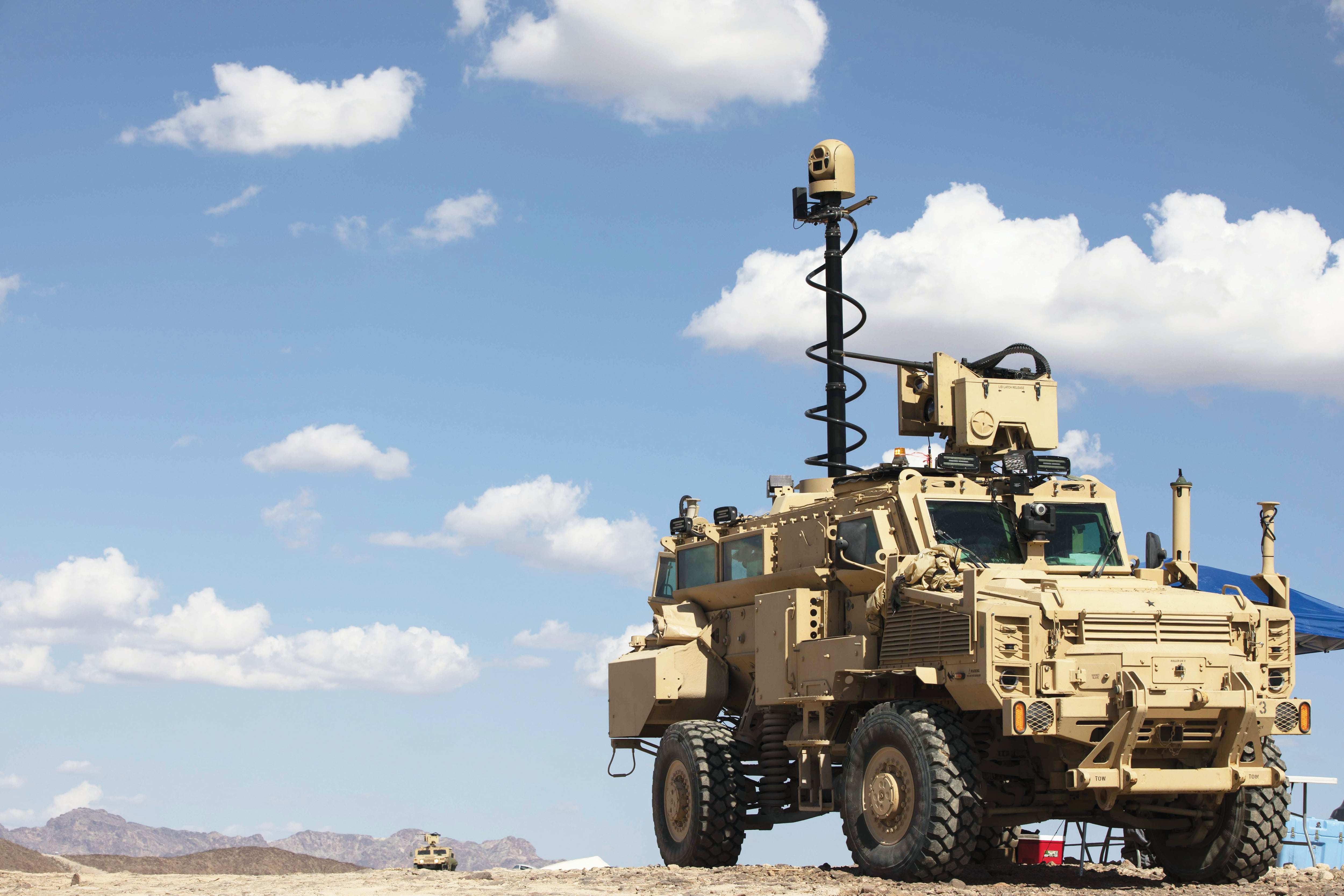WASHINGTON — The Army wants its Joint All Domain Operations (JADO) Gray Eagles to have synthetic aperture radars, moving target indicators, electronic intelligence and communications intelligence capability as well as air-launched effects and radar warning receivers, according to a new market survey.
Now, the Army wants help from industry with those payloads for its Gray Eagle unmanned aircraft systems. Specifically, the service is looking for systems that are capable of helping with joint operations across all warfighting domains against high-end threats from adversaries such as China and Russia, according to a solicitation published Dec. 2 to a government contracting website.
The service’s Aerial Enhanced Radar, Optics and Sensors (AEROS) product manager wants industry to “identify potential existing sources capable of providing Aerial Intelligence, Surveillance and Reconnaissance (AISR) payloads for the MQ-1C Gray Eagle Unmanned Aircraft System platform that meet the JADO environment,” the solicitation posted to Beta.Sam.Gov states.
These Gray Eagles payloads must be capable of increased ranges and resolutions “to support target location and Long-Range Precision Fires (LRPF) without the use of traditional line of site visual equipment to include Electro Optical, Infrared (EO/IR) and Full Motion Video (FMV) required for today’s Counter Insurgency (COIN) mission,” the request for information stresses.
Traditional COIN payloads won’t hold up against peer and near-peer adversaries, the Army noted, as they will “employ anti-access, area denial strategies, posing a significant challenge to the current AISR fleet,” the solicitation states.
Gray Eagles must survive against an “Integrated Air Defense System (IADS)-rich environment,” the request notes. This means the Gray Eagle would fly “racetrack patterns tangential to the IADS threat at 80 km distance” and would be capable of deploying Air-Launched Effects (ALE) forward into enemy territory to detect, identify and locate targets and take out or disrupt threats, according to the request.
The Gray Eagle would also have payloads that could detect IADS threats, locate them and transfer the information to other sensor systems capable of recognizing targets and coordinating long-range fires, the solicitation describes.
The Army is conducting the survey ahead of a Gray Eagle sensor payload JADO demonstration that could potentially take place in fiscal 2022 where systems will be “quantitatively compared” to find the highest performing and best value payloads based on technology readiness and production cost, the request lays out.
The solicitation for more advanced payloads for Gray Eagle comes at a time when the Army is trying to design a complex architecture of helicopters and unmanned aircraft systems that would be part of tight-knit kill chain to include space and ground assets underpinned by an advanced network.
The Army experimented with the kill chain to include air assets at Project Convergence at Yuma Proving Ground, Arizona, over the summer. The effort brings together future weapons and capabilities envisioned for a 2030s battlefield against near-peer adversaries such as Russia and China. It includes using a machine learning and artificial intelligence-enabled battle management system that is in development.
Gray Eagle represented a Future Attack Reconnaissance Aircraft (FARA) surrogate.
RELATED

During the first mission thread at Project Convergence, which focused on the penetration phase laid out in the Army’s Multidomain Operations warfighting concept, Gray Eagles and ALE partnered with space-based assets, APNT, and LRPF capabilities to locate, then degrade and destroy enemy assets modeled after the Russian Pantsir air defense systems and other weapons.
The ALE pushed ingested data forward through the network to get it to the right shooters, whether that would be an Extended Range Cannon Artillery (ERCA) system on the ground or a Gray Eagle or another ALE. The Army was able to extend the ALE capability out to almost 62 kilometers, which would provide deep standoff for manned aircraft like FARA. The ALEs performed both the reconnaissance, surveillance and targeting acquisition mission and worked as a mesh network to extend the battlefield. Two ALEs were truck launched and four were air launched.
Also during the final shot of the entire campaign at Project Convergence, a soldier on the ground took control of a LRPF munition surrogate (a Hellfire missile in this case) on a Gray Eagle and fired on the target.
The Gray Eagle at Convergence was able to route around and avoid threat weapon systems and also fired a live Dynetics-made GBU-69 small glide munition.
Previewing the future, the Army also used an open system architecture that was flexible enough for payloads and capabilities to be swapped in out of its Gray Eagles without having to rely on the original equipment manufacturer to do it.
Jen Judson is an award-winning journalist covering land warfare for Defense News. She has also worked for Politico and Inside Defense. She holds a Master of Science degree in journalism from Boston University and a Bachelor of Arts degree from Kenyon College.








